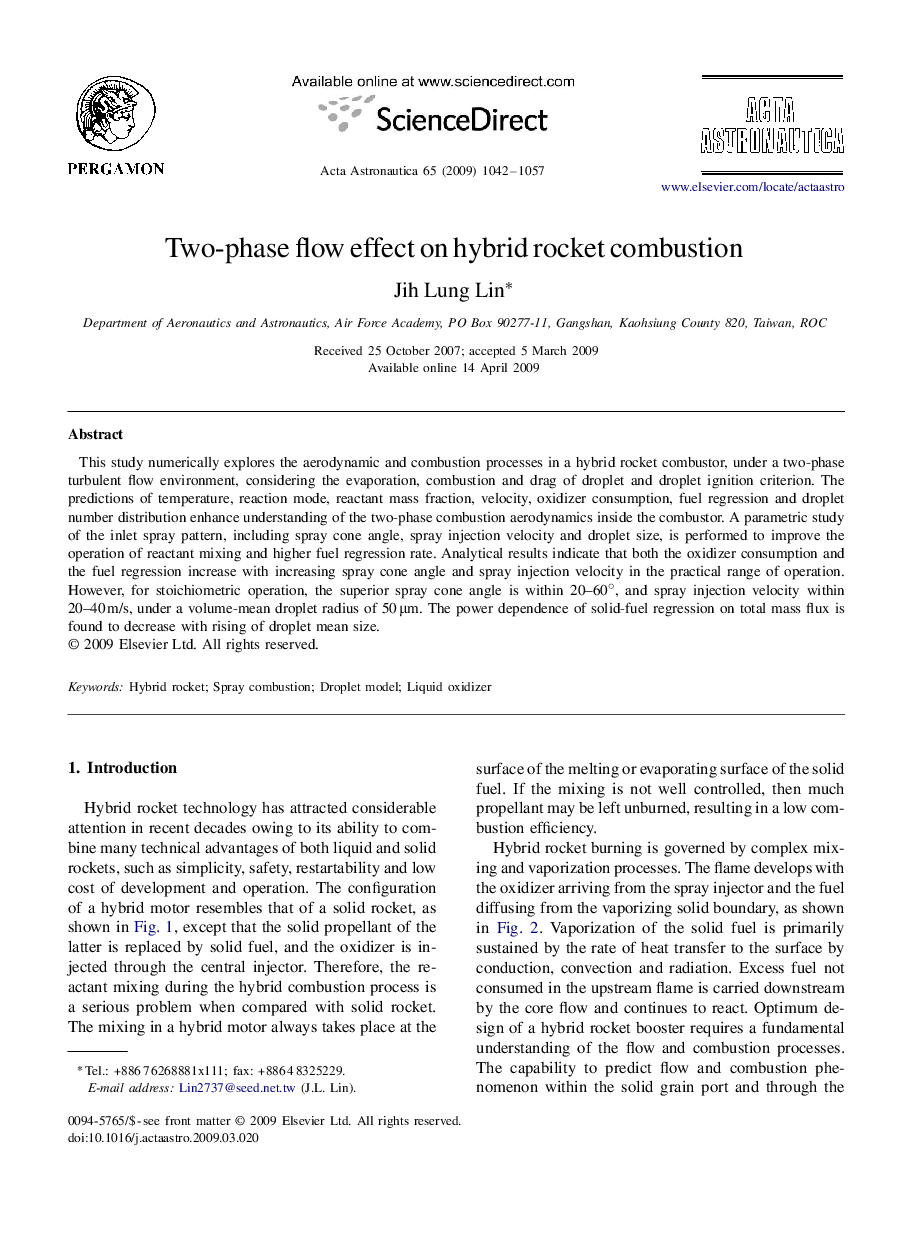| کد مقاله | کد نشریه | سال انتشار | مقاله انگلیسی | نسخه تمام متن |
|---|---|---|---|---|
| 1716284 | 1520005 | 2009 | 16 صفحه PDF | دانلود رایگان |

This study numerically explores the aerodynamic and combustion processes in a hybrid rocket combustor, under a two-phase turbulent flow environment, considering the evaporation, combustion and drag of droplet and droplet ignition criterion. The predictions of temperature, reaction mode, reactant mass fraction, velocity, oxidizer consumption, fuel regression and droplet number distribution enhance understanding of the two-phase combustion aerodynamics inside the combustor. A parametric study of the inlet spray pattern, including spray cone angle, spray injection velocity and droplet size, is performed to improve the operation of reactant mixing and higher fuel regression rate. Analytical results indicate that both the oxidizer consumption and the fuel regression increase with increasing spray cone angle and spray injection velocity in the practical range of operation. However, for stoichiometric operation, the superior spray cone angle is within 20–60°, and spray injection velocity within 20–40 m/s, under a volume-mean droplet radius of 50 μm. The power dependence of solid-fuel regression on total mass flux is found to decrease with rising of droplet mean size.
Journal: Acta Astronautica - Volume 65, Issues 7–8, October–November 2009, Pages 1042–1057